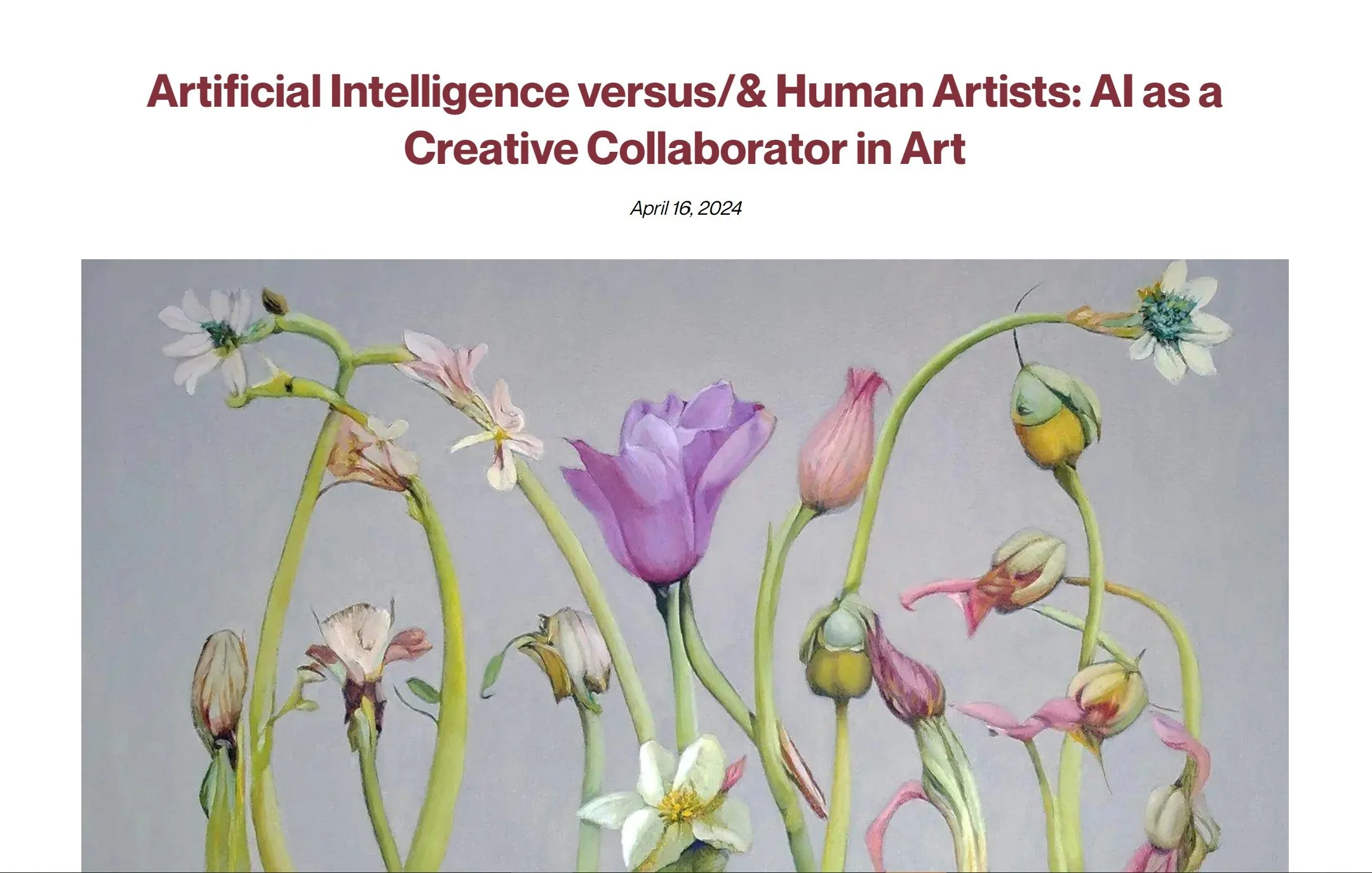AI-Assisted Art and Copyright: Human Creativity in the Age of Machine Collaboration
ARTIFICIAL INTELLIGENCE VS/& HUMAN ARTISTS: AI AS A CREATIVE COLLABORATOR IN ART
April 16, 2024
Written by Atreya Mathur, Director of Legal Research | Center for Art Law
Colleen Hoffenbacker | Featured Artist
Introduction
As artificial intelligence reshapes the creative landscape, artists are redefining what it means to collaborate with machines. From generative algorithms to hybrid workflows, the fusion of human ingenuity and AI capabilities is unlocking new aesthetic possibilities — and raising complex legal questions about authorship and copyright.
This article, featuring artist Colleen Hoffenbacker and legal researcher Atreya Mathur, explores how AI-assisted art is challenging traditional frameworks and forging new paths for creative recognition.
“Recently, I’ve integrated artificial intelligence into my digital process to harmonize the cutting-edge technology with timeless human values, creating a blend that’s uniquely mindful and full of wonder.”
HOFFENBACKER’S COPYRIGHT RECOGNITION
Colleen Hoffenbacker’s copyright registration in 2023 marks a pivotal moment in this evolving dialogue. Her AI-assisted works, including Regen 1.0.2 and Floragen 2.0.1, were granted protection under U.S. copyright law — affirming that her creative process met the threshold of human authorship.
“The artwork and collaborative process of creating the Regen and Floragen works by Colleen Hoffenbacker is a good example of combining AI-generated work with traditional oil paint to create collaborative AI-generated art which was also granted copyright protection.”
Hoffenbacker’s success stands alongside other landmark cases in the AI-art space. In 2022, Kris Kashtanova registered a copyright for an AI-assisted comic book, though the U.S. Copyright Office later revoked protection for the individual Midjourney-generated images. Jason M. Allen won a digital art competition with an AI-generated piece, but his copyright application was denied — highlighting the legal ambiguity surrounding machine-generated content.
By contrast, Hoffenbacker’s hybrid process — combining traditional oil painting with AI-enhanced tools — met the criteria for human authorship. Her recognition represents a significant step forward in the ongoing dialogue about creativity, authorship, and intellectual property rights in the age of artificial intelligence. It demonstrates that, with the right balance of human creativity and AI assistance, artists can produce works that are both innovative and legally protectable under current copyright frameworks.
FUTURE OF AI & ART
As technology evolves, artists like Colleen Hoffenbacker are venturing into uncharted aesthetic realms, sparking an AI-driven renaissance that merges brilliant minds with machine learning. Her work joins a growing movement of artists who treat artificial intelligence not as a threat, but as a collaborator.
Refik Anadol, known for his immersive data-driven installations, uses machine learning to transform datasets into dynamic visual environments. Sougwen Chung blends robotics and drawing to explore the boundaries of human-machine co-creation. Like Hoffenbacker, these artists are redefining authorship, process, and the role of intentionality in AI-assisted art.
The future of art is not a contest between human and machine — it’s a collaboration. And with each legally recognized work, the boundaries of creativity expand.
